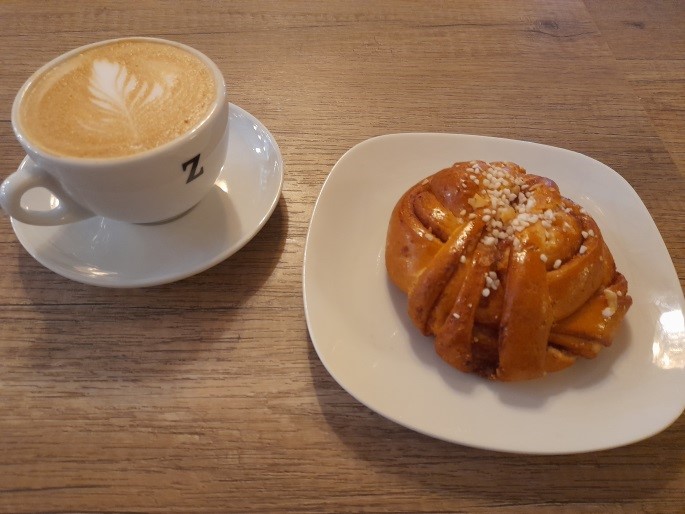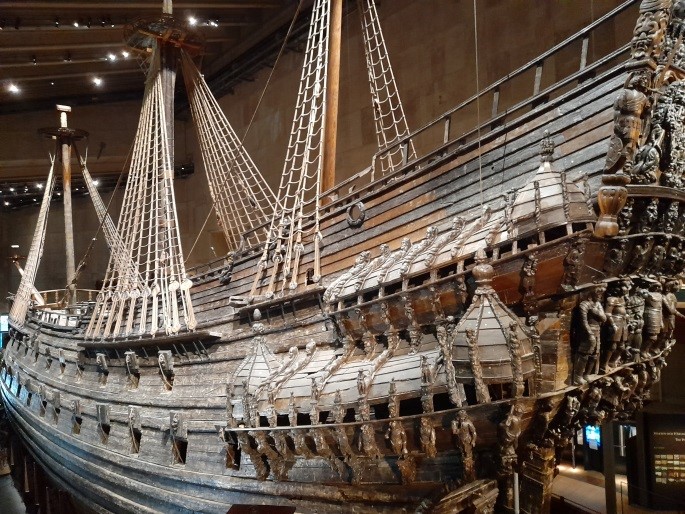In science, it is important to stay updated and to constantly learn new things. The exchange with other labs provide researcher with new possibilities and new methods. For this purpose, the technical exchange grant from the Cluster is a great opportunity and allowed me to learn a new method for three weeks at the Karolinska Institute in Stockholm. The Karolinska Institute is one of Europe’s biggest research institutes and has a very good reputation worldwide. Therefore, it is not surprising that the Karolinska Institute is always up to date and contributes to developing new methods like a modified version of ChIP called CUT&Tag, which I was able to be trained in!
CUT&Tag

The ChIP (Chromatin Immunoprecipitation) has been widely used as a molecular biological method to investigate the interactions between proteins and DNA. However, this method has several drawbacks such as the need for large cell numbers as starting material, crosslinking with formaldehyde or sonication which randomly shears the chromatin. To overcome these problems, it becomes more common to use Cleavage Under Targets and Tagmentation (CUT&Tag). In 2019, the Henikoff´s lab modified the CUT&RUN method into CUT&Tag. This method uses the ChIP principles but there is no immunoprecipitation step since the antibody incubation is followed by chromatin shearing and library preparation. The starting material for CUT&Tag is live permeabilized cells or isolated nuclei rather than crosslinked cells like in ChIP. The cells are immobilized on concanavalin A-coated beads for the next steps. Afterwards, the cells are incubated with the specific primary antibody for the protein of interest and then with the secondary antibody.
CUT&Tag is based on using the Tn5 transposase fused with protein A to guide the enzyme to the antibody bound to its target. The Tn5 transposase is preassembled with the sequencing adapters resulting in cutting chromatin close to the protein binding site and library preparation in one single step. For this step, it is important to know that Tn5 is an Mg2+ dependent enzyme and it needs to be added to the reaction. Since the CUT&Tag method is very sensitive the starting material can be very little and can even be used to detect histone modifications. The Tn5 only cuts close to the protein binding sites resulting in short fragments, whereas in ChIP the chromatin is randomly sheared by sonication. This makes a lower sequencing depth possible and leads to lower background/ noise signal. Another advantage of using intact cells (native conditions) as starting material in CUT&Tag is that it can be used for single-cell experiments.
Nevertheless, it is important to keep in my mind that also CUT&Tag can have disadvantages. Native conditions might not be feasible for every experiment. Also for transcription factors that weakly or indirectly bind to DNA, crosslinking would be still the method of choice. Moreover, it has to be considered that Tn5 has a higher affinity for open chromatin and thus is suitable to study actively transcribed regions.
Of course, after the lab part was done, it was time to explore Stockholm. Since winter season in Stockholm means -1°C on average and a maximum of 6 hours of light per day, one could assume that there is not much to do in Stockholm. However, there is surprisingly much to do and Swedish people developed methods to cope with cold and darkness:
The concept of “Fika”
“Fika” means a coffee break, often accompanied by cookies and is an institution in Sweden. Usually, there is one “Fika” break in the morning and one in the afternoon either with family and friends or colleagues. So when you are in Sweden make sure that you join this tradition, since denying this tradition is considered impolite.

Fairy lights all over the city
Although the sky is dark, this does not mean that the city turns dark! Stockholm, and especially the city center, are decorated with small lights which makes a walk very joyful. This year more than 40 streets and squares were decorated with over one million LED lights but also most of the private households decorated their balconies very creatively with deer and angles. Since Stockholm is built on 14 islands it is a must for winter visitors to glide around the ice-skating rink in the city center.

Exploring a museum or a castle
Visiting a museum might sound boring but Stockholm has a variety of very modern museums. Among experts, Stockholm is called an oasis for outstanding museums. There are museums for every taste varying from history, arts, music, etc. with impressive exhibits like the Vasa warship. For 12 museums the entry is even free, so it is definitely worth having a look.
Additionally, Stockholm has several royal castles which can be visited and show exhibitions about art, fashion, architecture, and furnishings from many centuries.
The snow reflection
After sunset, it is never pitch black due to the snow. In winter times there is so much snow, that the snow reflects the moonlight and the lights from the city and allows walks without big flashlights. Of course, the snow is also great for any kind of winter sport.
Get warm in a “Bastu”
The Swedish sauna (“Bastu”) has a long tradition but is more extreme than the classical Finnish sauna. Hot temperatures (80-100°C) are followed by radical cooling and then by spending time in a whirlpool (45°C). These extreme temperature changes are ideal to strengthen the immune system, which is very important for the cold Swedish winter.
I enjoyed my time very much in Stockholm because I could learn a new method and got the chance to meet another lab. I am really glad that the Cluster made this exchange possible for me.
Author: Melanie Kastl
